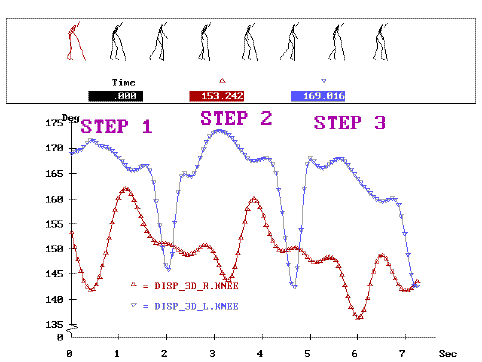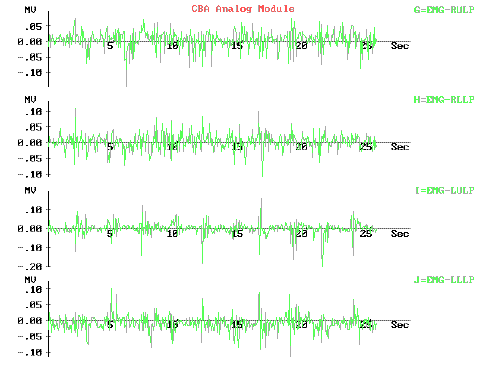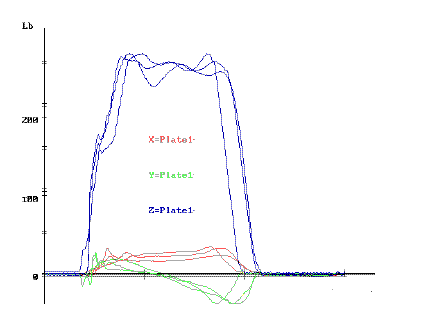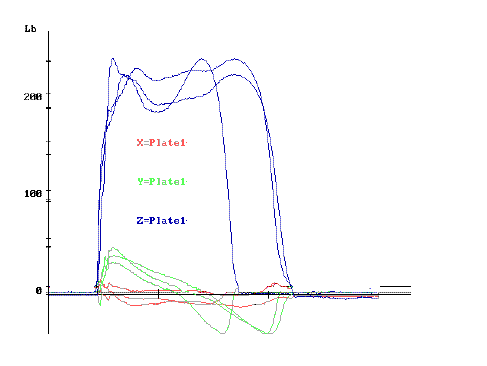The patient is a 52 year old male. He
was involved in an industrial accident. He claimed he was thrown from his forklift, when
his vehicle was struck in the side, by another forklift. The patient was taken to the
emergency room with "acute" back pain. X-ray's and physical examination were
unremarkable. He was sent home with an order for three days rest. At re-examination, the
patient claimed continued acute pain. He developed a severe limping gait pattern. Physical
therapy was ordered. The patient was kept out of work. Six months from onset, the problem
was not resolved. In the interim, EMG and MRI were performed. All tests were negative. The
insurance case manager suspected malingering. A gait and motion analysis were ordered to
determine if his clinical signs were consistent and compatible with his alleged back
injury. Test Protocol
A test was designed to analyze the kinematics,
kinetics and functional electromyography of the patient's functional ambulation, and
balance. Video computerized motion analysis, walking track force platform system and
multi-channel dynamic electromyography procedures were implemented to gather the necessary
data.
Functional Motion Analysis Results
Kinematic analysis revealed motion anomalies of
dynamic kinematic joint ranges. However, all joint ranges displayed extreme inconsistency
from step to step and trial to trial. [see Graph I]

Graph I
Dynamic Range of Motion - Right vs. Left Knee
EMG results revealed the patient was exhibiting
normal muscle firing pattern, in proper sequence, and symmetry. Frequency fatigue analysis
revealed normal fatigue, frequency shifting patterns and amplitude [see graph II].

Graph II
Multi-Channel Dynamic EMG- Lumbar Paraspinals
Kinetic force platform results revealed further
inconsistency in the patient's limping pattern. Multiple trials, failed to duplicate his
limping pattern for either the right or left foot [see Graph III and IV].

Graph III
Force Platform-Right Foot

Graph IV
Force Platform-Left Foot
Outcome
Motion analysis conclusion stated the patient was
unable to duplicate his limping gait pattern from step to step and trial to trial. This
was confirmed with kinematic and kinetic test results. EMG failed to confirm the patient's
claim of muscular distress. The test results were incompatible with the patient's claim of
acute low back distress. Symptom Magnification was clear. In the absence of positive,
objective clinical evidence to support the patient's subjective claim, he was terminated
from active medical treatment and returned to work. A legal claim petition was filed on
the patient's behalf, by his lawyer. The claim was dropped at the conclusion of discovery
and deposition, for lack of evidence. |